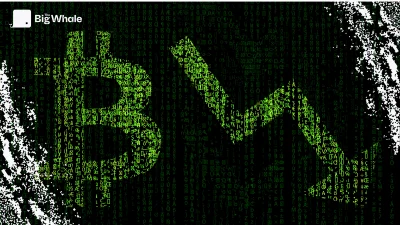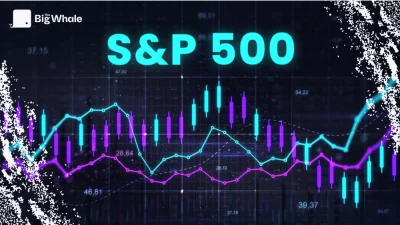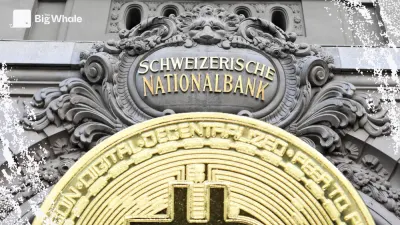TBW - Markets: have we entered a bear market?

In brief
- Bitcoin has lost more than 20% since its ATH, technically entering a bear market.
- Two possible paths: a short correction or a full-blown post-halving bear market.
- The macro context works in the opposite direction, however: monetary tightening is over, limiting the risk of a prolonged cycle.
Has Bitcoin tipped into a bear market? After a year 2025 marked by historic highs and unprecedented institutional adoption, the question is now agitating trading desks and Telegram forums alike. In the space of a few weeks, the asset has lost more than 20% since peaking at $126,080 in October, falling below the symbolic $100,000 mark and even touching $93,000 on Sunday.
A technical threshold which, according to the classic definition, officially marks entry into a bear market. But behind this mechanical signal lies a more nuanced reality, where macro dynamics, flow exhaustion, US fiscal constraints and contradictory signals sent by traditional markets are all mixed together.
To understand what is at stake, Eliézer Ndinga, head of research at 21Shares, delivers an interesting analysis. For him, the ingredients of a 'classic' bear market are easily identifiable: a drop of more than 20%, deteriorating sentiment, declining volumes and growing distrust of risk. Bitcoin today meets these criteria.
History shows, however, that there are two types of bear cycle: long, 'cyclical' bear markets, where Bitcoin corrects by an average of 84% over more than two years; and short corrections, close to -36%, which last a few months before a return to the uptrend. The challenge, in 2025, is to determine which category this new phase falls into.
A number of signals make this a tricky exercise. From a historical perspective, the timing would argue in favour of a prolonged bear cycle: major bear markets in Bitcoin often appear in the two years following a halving. The last halving took place in 2024, exactly in the time frame in which these reversals materialise. Another troubling element is that October 2025 ended with a negative performance, a configuration not seen since 2018, a few weeks before one of the longest bear markets of the previous cycle.
Current monetary policies incompatible with a true bear market?
But this "historically consistent" reading comes up against an unprecedented macroeconomic environment. Previous bear cycles were almost always triggered by abrupt monetary tightening: 2018, then 2022 when central banks withdrew liquidity at breakneck speed.
In 2025, the situation is reversed: the tightening period has just ended and the economy is moving towards gradual easing. For Eliézer Ndinga, this point changes everything. The absence of a major macro shock argues for a short bear market, unless an exceptional event (a systemic hack or a major bankruptcy) pushes the market into a deeper spiral.
Wintermute sees investors capitulating soon
This hypothesis of a "non-structural" bear market is echoed in another reading, that of Wintermute. The British market maker has been observing an unusual phenomenon for several months: a persistent asymmetry between Bitcoin and the Nasdaq. Although the correlation remains high, at around 0.8, Bitcoin hardly reacts any more to rises in the equity markets. Instead, it amplifies every downward movement.
This behaviour, known as "performance skew", is typical of capitulation phases... but this time it appears while Bitcoin is still trading at less than 20% of its all-time high. In other words, prices are holding, but the market is exhausted.
This exhaustion can be explained by a dual movement. On the one hand, "mindshare", the collective attention that fuels market narratives, has shifted massively towards technology stocks. By 2025, Nasdaq mega-capitalisations were capturing most of the flows, to the detriment of a crypto ecosystem that had not recovered the speculative energy of previous cycles. On the other, the structural liquidity of crypto has weakened: stablecoin growth is marking time, ETF inflows are slowing and market depth on platforms has not returned to pre-2024 levels.
In this environment, Bitcoin remains correlated to global risk, but it no longer benefits from its "narrative premium" during optimistic phases.
In addition to these factors, there is a geographical dynamic, highlighted by CryptoQuant analysts: the vast majority of selling pressure is coming from the United States. In their view, the current correction "is primarily American", fuelled by domestic liquidity stress, profit-taking by long-term investors motivated by their tax obligations, and persistent selling by US traders.
This geographical concentration of the sell-off is helping to accentuate bearish movements, even when the rest of the world appears more neutral or buying.
This cocktail (high correlation, negative asymmetry, fragile liquidity, fiscal pressure and US selling) looks more like the signals seen at the end of a bear market than at the top of a cycle.
>> The crypto market faces a liquidity blackout
Paradoxically, Bitcoin is weathering the shock well
Paradoxically, the fact that Bitcoin is not stalling more violently despite these headwinds suggests a degree of resilience. Its institutional adoption continues to grow, the discipline of its offering remains unchanged and its network security has never been so highly valued. None of these fundamentals has been called into question.
So, have we really entered a bear market? The answer really depends on the timeframe we adopt. In the short term, all the signals converge: Bitcoin is in a downtrend, with sentiment deteriorating and flow dynamics in retreat. But in the longer term, neither the macroeconomic environment nor the fundamentals of the network justify, for the time being, a swing into a prolonged cycle like that of 2018 or 2022. The market is tired, not broken.
So the question is not "are we in a bear market?" but "how long will this phase of breathlessness last?". And from that point of view, everything suggests that 2025 could be more like one of those bearish interludes that prepare the way for the rest of the cycle, rather than the end of an era.
>> Discover our Bitcoin Dashboard



